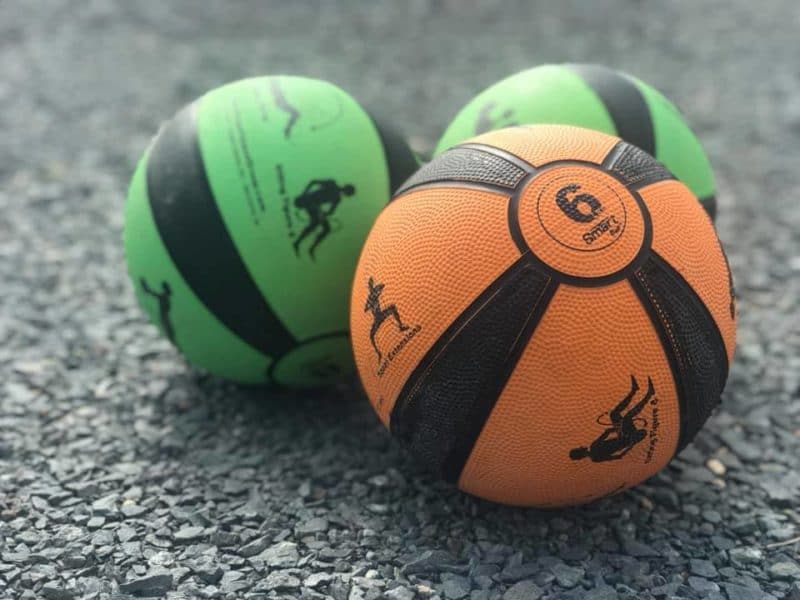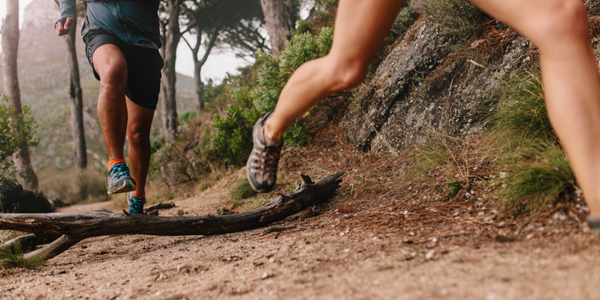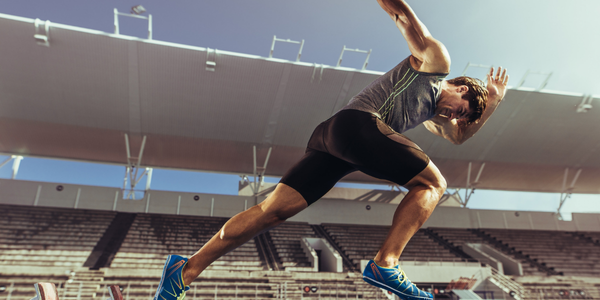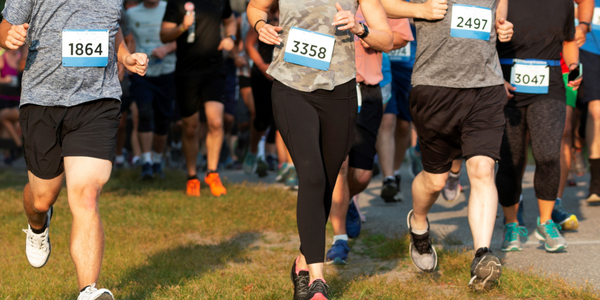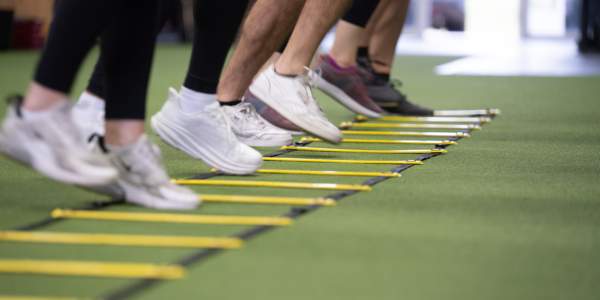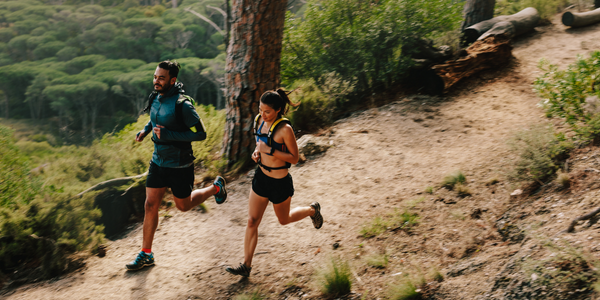1. Get new Shoes
Sure, you can take your regular running shoes out to any flat, wide, dirt trail, but if you plan to up the adventure, you may want to invest in some footwear that can handle roots, rocks, and mud. Trail shoes typically have a more aggressive tread, and the sturdy bottoms help protect your feet from sharp rocks and roots while helping to prevent slipping on wet or rugged terrain. Trail shoes also provide more structure and support to prepare for the constant lateral movements and generally hold up better to rips and tears from branches and rocks.
2. Strengthen Ankles, Hips, and Core in your Cross-Training
The more technical the trail, the more uneven surfaces you will encounter.
Having good core and hip stabilization can prevent your knees from wobbling on rough terrain, and good ankle strength will get you back on your feet quicker after the inevitable ankle roll on the trail. In fact, according to a study in the American Journal of Sports Medicine athletes following a balance-training program were less likely to experience ankle sprains.
3. Be ready to engage in all three planes of motion
While road running happens mostly in the sagittal (forward) plane of motion, trail running, by contrast, works several muscle groups in all different planes of motion including frontal (side to side) and transverse (pivot) planes as you hop over rocks and run on uneven surfaces.
Trail running involves larger movements in both your foot and arm stride as your body strives to keep balance while you leap and bound.
4. Don’t compare your road pace to your trail pace
Put the ego aside because most trail runs have a slower pace due to the unpredictable environmental and technical variables such as rocks, roots, trees, leaves, mud and insects that all cause changes in your stride and affect your speed. Instead of measuring by pace, start to measure by intensity. Your 5-mile technical-based trail run is not less of a workout than your 6-mile road run. And it’s probably leaps and bounds ahead in adventure (pun intended!).
5. Watch where you’re going
It’s natural to want to look straight down to follow your footing on a trail run, but you’ll give yourself more time to react to stimuli if you lift your gaze to watch what’s coming up on the trail. Trail running is excellent at building proprioception skills, or awareness of the position and movement of your body, as you need to be ready to react to the ever-changing terrain and trail environment as well as prepare your body for falls.
3 Balance & Stability Moves to Improve Trail Running
What you’ll need:
